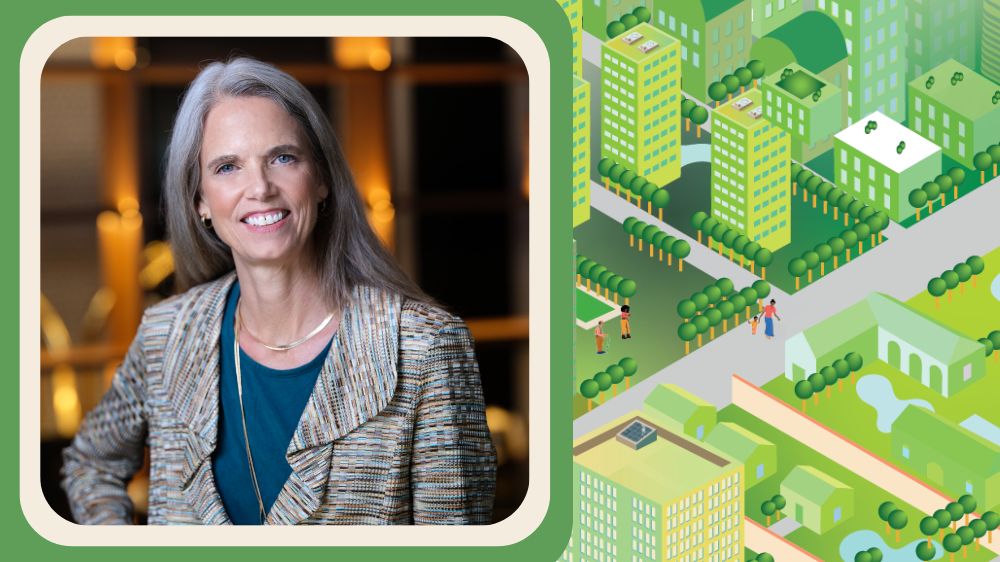Objective
Welcome to the Create a Heat Action Plan module! A heat action plan integrates a portfolio of assessments and actions to respond to and reduce heat-related impacts. The heat action planning process should be co-led with community partners and bring together diverse actors across sectors to increase coordination in preparation, response, and recovery stages of heat management.
These plans may include both emergency response activities and long-term heat preparedness and cooling interventions across sectors. They often include an agreed-upon plan of action outlining roles and responsibilities between departments and organizations both internal and external to a municipal government.
This module synthesizes the preceding planning steps to help you develop an implementable heat action plan grounded in leading practices.
Essential Actions, Outputs, and Outcomes from this Module
Actions
-
Gather and organize the outputs developed in prior modules in partnership with relevant stakeholders.
-
Identify and empower a heat champion to coordinate the development, activation, implementation, and monitoring of the plan across all stakeholders.
-
Create a project plan including key interventions, responsible actors for each, and timeline for implementation and public progress reports.
-
Decide how you’ll define “success,” and develop a monitoring and evaluation process including key performance indicators and a timeline for monitoring the indicators.
Outputs
-
Heat action plan document with listed interventions, designated accountable actors for planned actions, and a monitoring and evaluation plan.
Outcomes
-
Short-term and long-term heat-related priorities and interventions are identified.
-
A plan for ongoing community engagement and outreach is developed.
-
Existing partners and new relationships critical to managing extreme heat in your jurisdiction are identified.
-
Understand how heat action plans can be integrated with existing planning initiatives (e.g., climate adaptation plans, emergency response plans)
Overview
The Essential Actions, Outputs, and Outcomes include the core elements of the more comprehensive approach described throughout the rest of the module. We know that time, resources, and capacity can limit the breadth and depth of interventions you undertake. Simply beginning to explore these modules and consider what solutions are appropriate for your context is a critical step toward building your jurisdiction’s heat resilience. At any point, reach out to Arsht-Rock using the contact form at the bottom of the page with questions and comments.
What does a “good” heat action plan look like?
A successful heat action plan:
- Grounds interventions in the needs of the most heat-vulnerable by creating pathways for community members to co-create the plan from the beginning of the development process
- Takes a whole system approach considering initiatives from revising building codes to public health preparedness measures
- Mainstreams heat planning into regional urban planning through embedding heat interventions in existing regulatory frameworks and planning processes
- Identifies a responsible heat champion or group of champions that can advocate for and drive the implementation of interventions to mitigate the impact of extreme heat
- Establishes and outlines a feasible system to monitor clear metrics to track the progress of interventions in reducing the negative impacts of extreme heat
Core components of a Heat Action Plan
Explaining heat risks and impacts
Heat action plans often begin by defining the heat-related challenges that the jurisdiction faces—in essence, setting the context for why planning and action are necessary. Two commonly referenced types of data that can tell the story and provide evidence of these challenges are:
- The number of heat wave days (or extremely hot days), and any trends in frequency.
- Heat mapping or vulnerability mapping, which respectively identify exposure to heat and vulnerability of specific populations or neighborhoods.
See “Impacts of extreme heat in the region” below for other examples of risks and impacts a plan might include, from current events to more formal studies and climate modeling.
Resources
Climate Action Plan 2050: City of Buenos Aires
For an example of how cities can integrate heat mapping into a broader climate action plan, see page 30-32 of the Buenos Aires Climate Action Plan.
Heat Resilience Solutions for Boston
- United States
For examples of daytime and nighttime air temperature maps of the City of Boston, see pages 60-61 of Heat Resilience Solutions for Boston.
Impacts of extreme heat in the region

Health impacts
Increased number of deaths or cases of heat-related illnesses due to extreme heat.
During the 2021 heat wave in the Northwest United States and Canada, 619 people died of heat-related causes in British Columbia, Canada.

Agricultural losses
Increased destruction or stagnated growth of crop yields due to extreme heat.
In 2022, agricultural yields for maize, sunflower and soya bean yields were forecast to drop by 8–9% in the EU due to heat waves and drought.

Labor productivity losses
Hours of labor lost by working population in an economy due to extreme heat.
Researchers estimate that India currently loses more than 100 billion hours of labor per year to extreme heat.

Learning losses
Hours of classroom time lost due to school shut downs as a result of extreme heat.
A 2023 study found that students in Colombia scored lower on tests when exposed to extreme heat in the week leading up to the exam.

Energy demand
Increased demand for energy to meet skyrocketing cooling demands during extreme heat.
In Western Sydney, Australia, residential electricity use can be three to four times higher than normal on days 35°C and hotter, placing further stress on the power grid and increasing the likelihood of power outages.

Infrastructure damage
Increased operational and maintenance costs for infrastructure damage caused by extreme heat.
During a 2022 summer heat wave, railroads bent and roads buckled in the United Kingdom due to high temperatures.
Heat-exposed populations
To help identify and prioritize interventions, heat action plans typically include a population analysis, which highlights key populations are particularly at risk to consequences of extreme heat. This analysis often takes the form of a:
- Vulnerable populations table, which enables public officials to devise more targeted interventions by identifying people who are most heat-exposed or who have physiological, social, or economic vulnerabilities to heat.
- Vulnerability mapping analysis, which enables planners to use spatial, temperature, and demographic data to identify which neighborhoods should be prioritized in investment and heat wave response.
- Qualitative reports, which include community voices and perspectives to highlight firsthand experience of heat exposure or vulnerability.
Resources
Jodhpur Heat Action Plan
- India
For an example of a heat vulnerability assessment was integrated into a city’s plan, see pages 14-22 of the Jodhpur Heat Action Plan 2023.
Miami-Dade County Extreme Heat Action Plan
- United States
For an example of how a vulnerability assessment conducted for a US city, see page 9 of the Miami-Dade County Extreme Heat Action Plan.
Plan de Acción Climática, Medellín 2020–2050
- Colombia
This is a Spanish language resource.
Existing heat-related plans, protocols and systems
Local and regional governments often have multiple plans that either reduce or exacerbate urban heat. For example, urban tree canopy plans, hazard mitigation plans, or comprehensive plans may already be in place. Practitioners should be familiar with these plans and work to recognize and build on them in a heat action plan. This integration of prior efforts will also acknowledge any community input and investment that has gone into prior planning efforts.
Heat action plans can also acknowledge any existing heat-related protocols and systems (e.g., heat wave thresholds or early warning systems), to outline the environment within which an action plan will be developed and carried out.
- Heat wave thresholds: As there is no global definition of a heat wave, local or national heat wave thresholds define particularly dangerous temperature conditions.
- Early warning systems: Issue heat warnings based on a set threshold or qualitative impact assessment process to keep the public and partners notified of dangerous conditions.
Resources
Karachi Heat Action Plan
- Pakistan
For an example of a definition of regional heat wave thresholds in a heat action plan, see page 21 of Karachi Heat Action Plan: A Guide to Extreme Heat Planning and Response.
Western Sydney Heat Strategy and Action Plan
- Australia
For an example of a multi-year heat wave days analysis leveraging daily maximum temperatures, see page 9 of Western Sydney’s Turn Down the Heat Strategy and Action Plan.
Ahmedabad Heat Action Plan
- India
For an example of a successful, operational early warning system, see page 3 of the Ahmedabad Heat Action Plan.
Adaptation strategies to manage extreme heat
Types of interventions
- Planning and policy: New regulations, codes or action plans
- Communications and outreach: Campaigns to raise public awareness or provide critical services for heat wave management
- Green and natural infrastructure: Nature-based greening and water solutions
- Buildings and built form: Introduction of new standards or infrastructural upgrades for buildings
Resource
Climate Action Plan 2050: City of Buenos Aires
- Argentina
For an example of how cities can integrate heat adaptation strategies into a broader climate action plan, see page 90-92 of the Buenos Aires Climate Action Plan.
Extreme heat management schedule
Some heat resilience interventions will be ongoing; others should be deployed for heat event(s) and/or heat season(s).
For further resources to identify extreme heat interventions for your region, please explore the following Heat Action Platform sections: Develop an Education & Engagement Strategy, Explore Heat Adaptation Solutions or the Heat Action Platform Policy Tool.
Building an action plan
Primary responsible agency or officer and their key duties
A primary responsible actor, such as a designated officer or lead government agency, should be identified when devising a Heat Action Plan to coordinate the development, activation, implementation and monitoring of the plan.
List of agencies and civil society partners
Comprehensive heat action planning should be a holistic effort, co-created with government, civil society, community groups and community members, to ensure an effective and sustainable response to extreme heat.
For example, in the United States, during the creation of the Miami-Dade County Extreme Heat Action Plan, Miami-Dade County led a series of workshops to engage 298 residents, stakeholders, and experts to learn more about extreme heat and recommend actions. The plan development process was guided by a Climate and Heat Health Task Force, which included community members, community-based organizations, and other county stakeholders.
In India, the Telangana Heatwave Action Plan included the Disaster Management Authority, Animal Husbandry and Fishery Department, Public Health and Family Welfare Department, Indian Meteorological Division, Labor and Employment Department, Transport Department, School Education Department and Urban Development Department as partners, among others.
Mapping interventions to responsible actors
To ensure all accountable actors are aware of their responsibilities for short- and long-term interventions, heat action plans should include a table identifying responsible parties for each agreed intervention.
Resources
Bihar Heat Action Plan
- India
For an example of a table mapping key interventions to responsible departments prior to and during heat events, see pages 31-39 of the Bihar Heat Action Plan.
Rajasthan Heat Action Plan
- India
To see example checklists of stakeholder actions that have been integrated into a plan for a rural area, see pages 34-37 of Rajasthan’s Heat Action Plan.
Implementation timeline for extreme heat interventions
To establish a clear path forward for implementing interventions, heat action plans should include an implementation timeline for short- and long-term interventions across both heat season and heat events.
Resource
Western Sydney Heat Action Plan
- Australia
For an example of a detailed implementation timeline of heat interventions mapped to a multi-year timeline, see page 20 of Western Sydney’s Turn Down the Heat Strategy and Action Plan.
Identifying Funding and Financing
Heat action plans should identify sources of funding or financing for key short-, medium- and long-term interventions to ensure recommendations will be implemented. See the Fund and Finance Heat Action module for more information.
Governance
Cadence of review for Heat Action Plans
Heat action plans need to reflect both extreme heat information and current vulnerabilities; they should be seen as living documents, and regularly updated. The heat planning process should include agreeing on a cadence (every 2 years; every 5 years) for review of the plan with stakeholders.
Reporting heat-related health impacts
To address gaps in knowledge on causes and severity of heat-related death and illnesses, reporting formats can be included as part of heat action plans. This will ensure consistency and comprehensiveness of data collection related to factors contributing to heat-related deaths and illnesses.
Resource
India National Disaster Management Authority Heatwave Management Guidelines
- India
For an example of a reporting format which captures demographic factors that contribute to the incidence of heat-related illnesses or death, see pages 33-37 of the Indian National Disaster Management Authority’s guidelines for state-level extreme heat management.
Monitoring and evaluation of heat action plans
To ensure heat resilience strategies are achieving their intended goals, heat action plans should establish a monitoring and evaluation process including key performance indicators, timeline for monitoring (monthly, quarterly, yearly) and the main responsible party conducting the assessment. For more information, see the Monitor and Evaluate Heat Action module.
Resources
Evaluation of Ahmedabad’s Heat Action Plan
- India
For an example of how researchers analyzed the outcomes of a heat action plan, see this evaluation from the Indian Institute of Public Health, Gandhinagar, the Natural Resources Defense Council, the Rollins School of Public Health of Emory University, and the Icahn School of Medicine at Mount Sinai
Heat Action Planning Guide for Neighborhoods of Greater Phoenix
- United States
For an example of detailed, community-led success metrics for a heat action plan, see pages 107-117 of the Heat Action Planning Guide for Neighborhoods of Greater Phoenix, produced by The Nature Conservancy and other partners.
Database of Heat Action Plans and Case Studies
- Global
To review more heat action plans from across the globe, please visit the Global Heat Health Information Network’s Database of Heat Action Plans and Case Studies.
Congratulations! You’ve completed Create a Heat Action Plan.
Review the Essential Actions, Outputs, and Outcomes from this Module or proceed to the next module.







